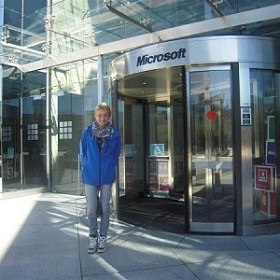Hola:
En mas de un cliente podremos encontraros que ya tienen implementado app-v.
Y como digo yo, no reinventemos la rueda y aprovechemos al máximo posible las soluciones que han inplantado grandes profesionales.
Os dejo es este pequeño espacio como publicar aplicaciones App-v en Xenapp.
Un saludo a tod@s
Publishing App-V Sequences in XenApp
Updated: 2011-04-12
You can deliver the Microsoft Application Virtualization (App-V) sequences to users by publishing the sequences in XenApp and delivering the Microsoft Application Virtualization Desktop client through Citrix Merchandising Server and Citrix Receiver Updater.
To deliver App-V sequences using the Citrix application streaming feature, Citrix provides a conduit utility that supports a dual mode execution. With dual-mode, users launch applications as they normally do, and the conduit checks for presence of the App-V client. If the App-V client is installed, the App-V sequence streams to the user device; if not, the application launches from a XenApp server and streams to the user device.
- Citrix supports App-V sequences on all operating systems supported by Microsoft App-V.
- Citrix Receiver Updater for Windows supports App-V clients 4.5 and 4.6.
- User devices must have the Citrix Offline Plug-in 6.x installed locally.
- Deliver the App-V client to users through Citrix Merchandising Server and Citrix Receiver Updater
- Publish App-V sequences for virtualizing on user devices if possible, otherwise virtualizing on XenApp servers
Users can then launch the App-V sequences on their desktops by clicking on the icons delivered through XenApp.
- Microsoft Application Virtualization Desktop Client installer (setup.exe) from your Microsoft Desktop Optimization Pack (MDOP) installation media, to upload to the Merchandising Server.
- App-V Integration Kit from Citrix ( http://citrix.com/English/ss/downloads/details.asp?downloadId=2310183&productId=1689163&ntref=clientcenter#top).
Save the unzipped contents locally:
- Save the App Streaming To AppV Conduit folder on your App Hub (the server where you store your profiles). The folder contains a pre-created AppStreamingToAppVConduit.profile file, as well as the required support files for the profile. This single profile can be used to publish an unlimited number of App-V sequences.
- Upload the App-V MetaData files and the App-V client’s setup.exe file to the Merchandising Server to create an App-V client. Citrix provides these files to add the functionality to the client needed for Citrix Receiver Updater. These files include:
- AppV_MetaData.xml
- AppVReg.msi
- AppVReg_MetaData.xml
- Save the Streaming Conduit – source code folder locally. These files are not needed to publish your applications, but you can use them to modify the conduit, if needed. This folder contains the source code for the conduit.
To deliver the App-V client with the Citrix Merchandising Server and Citrix Receiver Updater
- In the Merchandising Server Administrator Console, navigate to the Plug-in > Upload page.
- To upload the App-V_Reg plug-in components:
- For the Metadata File, click Browse to navigate to the unzipped location of AppVReg_MetaData.xml.
- For the Plug-in File, click Browse to navigate to the unzipped location of AppVReg.msi.
- Click Upload.
- To upload the App-V client components:
- For the Metadata File, click Browse to where you downloaded App-V_MetaData.xml.
- For the Plug-in File, click Browse to navigate to the location of the Microsoft Application Virtualization Desktop Client installer, setup.exe.
- Click Upload.
- Configure a delivery to communicate with your App-V server. (For additional information on creating and scheduling deliveries, see the Merchandising Server documentation.)
An overview of the entire Plug-in upload and delivery process when using Merchandising Server 1.0 can be viewed at http://www.citrix.com/tv/#videos/773.
If users have the Self-service Plug-in, they can add published App-V sequences as they normally add applications.
To publish App-V sequences for streaming to desktops
- In the Citrix AppCenter, open the application publishing wizard and follow the on-screen instructions.
- Name the application with a name familiar to users, such as «Microsoft PowerPoint 2007.»
- On the Type page, configure the dual-mode delivery method:
- Select Application.
- For application type, select the dual-mode option: Streamed if possible, otherwise accessed from a server.
- For the server application type, select the secondary delivery method, such as Installed application.
- On the Location page:
- Browse to your App-V server where both the conduit utility and App-V sequence are located.
- The application to launch is AppStreamingToAppVConduit.
- Add the command-line parameters to locate the specific App-V sequence on your App-V server.For Command Line:
Enter the full path to your Microsoft Application Virtualization Client executable, followed by the location of your App-V sequence, such as:
"C:\\Program Files\Microsoft Application Virtualization Client\sfttray.exe" "\\appv\content\Off2k7\Microsoft Office PowerPoint 2007 12.0.6425.0000.osd"
- On the Shortcut presentation page, manually select the icon from your icons directory (no icon by default), such as the icon for Microsoft PowerPoint.
- Finish the publishing wizard as you normally do.
For more information about the AppStreamingToAppVConduit utility, see http://support.citrix.com/article/CTX124860 in the Citrix Knowledge Center.
To launch the App-V sequences
- Citrix Receiver Updater informs them of Plug-in updates, and if they accept the App-V client, it installs silently in the background.
- If they use the Citrix Self-service Plug-in for the Receiver, they can subscribe to App-V sequences through that Plug-in.
- If the App-V client is installed, the App-V sequence streams to the user device, where it runs in the App-V isolation environment.
- If the client is not installed (or the device does not support streaming for other reasons), the conduit triggers the Offline Plug-in to initiate a XenApp server session where the application executes and is presented to the user over a remote display protocol.
